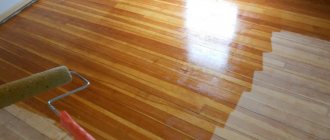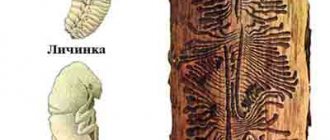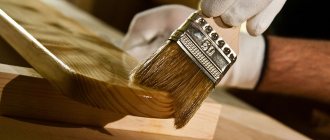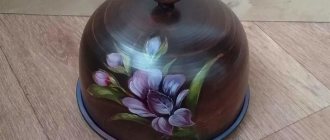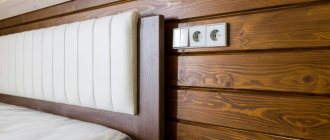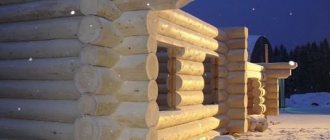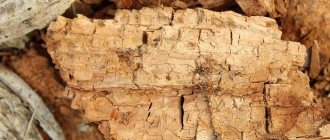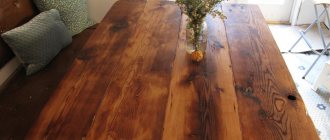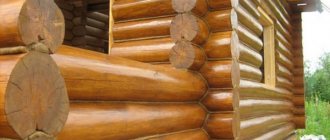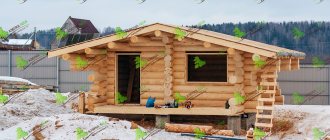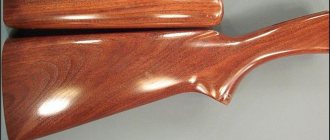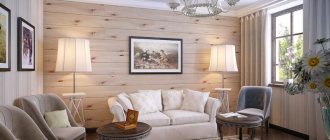Oak wood is one of the most noble and valuable species used in carpentry. Oak is hard, durable and looks very beautiful if chosen and applied correctly. However, working with oak can also result in a serious headache. But if you follow some tips when working with this type of wood, you can achieve the desired results with a minimum of effort.
Rules and recommendations
To dry oak in large industries, drying chambers and the vacuum method are used.
At home, these methods are not available, since they require special equipment, which is expensive. Another effective method is under the influence of electric current, but in Russia it is practically not used due to its high cost. Before drying the material, it is recommended to remember the following rules:
- Oak wood dries out easily. This means that when the humidity drops below 7%, the product will begin to crack, both inside and out.
- The longest time will be required to dry fresh wood with a moisture content of 25%.
- If you start drying immediately by raising the temperature above 50 degrees, the internal capillaries of the wood will begin to collapse and the product inside will become covered with cracks. This will not affect the appearance, but the fragility increases by 75%.
- High-quality drying is carried out only by maintaining uniform temperature and humidity.
How to properly dry oak is planned, since the final percentage of moisture depends on the tasks and purpose of use of the product. The tasks of drying oak can be considered in the table:
| Task | Permissible final percentage of humidity,% |
| Drying without changing linear dimensions | 30 |
| Transportation | 20–22 |
| Operation and production of furniture elements | 6–12 |
Complete drying is used only in the manufacture of furniture or small interior design elements. For medium and large sized lumber, processing for transportation and storage is sufficient.
If you do the varnishing yourself
Any varnishes are toxic. Some are more, others are less. But if you are varnishing a staircase in a residential building, make sure that no one is inside during the work. All work must be done in a special protective mask to avoid poisoning. If the work is carried out in a permanent place of residence, choose the fastest drying compounds. Otherwise, you will have to temporarily move to a hotel or with relatives.
It is still better to entrust the work to the masters. This way you will get an excellent result, the coating will be uniform, without streaks and untreated areas of the wood. This is the only way to guarantee many years of service life of the entire structure.
Solid oak board is a high quality flooring that can only be made from solid natural wood with a tongue-and-groove joint around the perimeter. The classic dimensions of a solid board range from 90-100 mm in width and 900 mm in length. This is the main difference between this board and parquet. Ready-to-use boards are sold only with a factory finish coating (it can be varnished, made with oil or oil-wax).
Oak floorboards in the interior
Taking into account the fact that the cost of material for the manufacture of this coating is characterized by a high cost, solid boards are considered a premium product.
Varnished board
Transparent varnish perfectly conveys the texture of wood
Externally, this material is a homogeneous rectangular structural unit made of solid wood of established dimensions. At the ends, the solid board is milled with a tongue-and-groove connecting profile. In order to eliminate internal stresses, special longitudinal cuts are provided on the back side of the solid board - holes.
The picture in front of you shows a floor covered with natural solid oak boards. Agree, it looks very good even without any decorative processing
Regarding the length, there are two types of boards based on this parameter - fixed and combined. In a package of fixed-length boards, all structural elements are the same size (the most common standard is 900 mm). In another way, this type of material is called single-length. This option (in principle, it can be called budget) is considered the simplest in terms of design, but in terms of quality it is in no way inferior.
But in order to create a more interesting pattern on the floor, a massive board of combined length is used. The packaging of multi-length boards necessarily includes structural elements of the following dimensions:
- At least one full length floorboard (e.g. 1600 mm) and a number
- Shortened floorboards (dimensions 300-400 mm)
- Medium-sized floorboards (600, 800 mm).
Wood patterns
The standard thickness of solid oak is 18-22 mm, but recently domestic factories have begun to produce 16 and even 15 mm boards. By the way, these products began to be in very high demand. Exactly the same as unedged oak boards.
Several available methods for preparing wood
For home processing, the following methods are used:
- Dry the oak tree in advance. The required tree is marked in advance on the plot and in the spring the bark is removed from it, right from the roots to a height of 20–30 cm. The juices will not be able to reach the crown in the required volume and the oak will dry out. In the fall it is cut down and cut into timber.
- Natural drying. Oak wood of natural moisture content is purchased. The material is laid out under cover on the site, so that the wood is blown from all sides. The material is laid on chocks in layers. The distance from the ground to the bottom row is at least 300 mm. Drying time is 3–6 months, depending on climate and humidity.
- Drying small items indoors. The oak product is wrapped in newspaper in 5–8 layers and covered with PVC film on top. Holes are made in the film for ventilation. The product is placed on the windowsill above the battery. Once an hour the package is turned over. The process takes 2–3 days. This is the most affordable way to dry a wooden product at home.
Drying large oak timber at home is difficult. The most affordable option is outdoors. But wood is hygroscopic and easily absorbs moisture from the air. That is, if drying is carried out during the rainy season, the process becomes useless. The easiest option is to harvest wood from the winter forest. In winter, at temperatures below -20, oak wood acquires moisture equivalent to chamber drying. Therefore, products from winter forest do not require additional preparation.
Measures to improve the mechanical properties and appearance of solid oak boards
Oak floor
As already mentioned above, during manufacturing a solid board is necessarily covered with a special protective layer of oil, varnish or oil-wax at the factory. Each type of coating has its own advantages and disadvantages, each of which will be described below:
Oak flooring with dark varnish
Varnish coating
– it just so happened that in the vast majority of cases, the parquet was opened with varnish, oil or wax after installation had been completed. However, today solid oak boards are delivered to points of sale with a protective layer already applied. It becomes possible to improve the quality of a varnish coating by using special compounds with ultraviolet curing (UV varnishes). The varnish coating is considered one of the most durable and durable, but it does not provide for the possibility of local repairs. If the coating is damaged on any part of the floor, you will have to sand and re-varnish the entire surface.
Double layer of dark varnish
Coating with special oils
. The main property of natural oil used to coat solid oak boards is that, thanks to the use of this product, the top layer of wood is impregnated, but a separate protective film is not created on the surface of the floorboard. This leads to the fact that to the touch a solid oak board impregnated with oil is no different from an uncoated board. One of the main advantages of a board coated with natural oil rather than varnish is the ability to carry out local repairs (that is, processing exactly the element whose surface has been damaged). The damaged area will need to be cleaned and re-oiled. That's it - the board can be reused. The disadvantage of this coating material is its fragility. In order for the wood to retain its properties, the oil coating procedure will need to be carried out at least once a year (or better yet, once a quarter). Another disadvantage is that any liquid that spills on the floor and is absorbed into the board will only be removed after effort has been made to remove it.
Special oil coating
Use of oil-wax composition for coating
. In this case, we mean a specially selected mixture of natural oils and paraffins. This material is the most reliable today - a worthy replacement for the wax mastics of the past. This coating has the positive properties of both compounds mentioned above - thus creating a durable protective film, which, if necessary, can be easily renewed.
What technologies allow you to modernize the appearance of the board - types of decorative processing
Often, solid oak boards are sold without any decorative treatments - the board itself, sanded and coated with a protective layer, is an excellent covering material that is not only durable, but also pleasing to the eye.
Stained oak floor
But modern manufacturers are trying to make their product more in demand on the market through the use of one or another decorative treatment or a combination of them. One of the most fashionable today are techniques aimed at creating a wear effect (artificial aging). The most common types of processing will be mentioned below:
A tinted oak board gives this material an even more natural pattern, visually making it a seemingly logical continuation of the walls. A very original design, for which the tinting technique was simply chosen perfectly.
Toning
. The board is coated with decorative paint (one or several layers). The point of this technique is to give the board a different color, and when combined with other processing methods, to emphasize the natural grain of the wood. By the way, in order to preserve the natural grain of the wood, very thin layers of paint are applied. Or another option - coating is combined with brushing. This technique involves tinting the recesses of the board with one color, and the elevations with another. Or - the same color, but a less intense shade. Although, you don’t have to tint them at all.
In this case (the image in the picture) it is shown what kind of look can be given to a dry board made of natural oak using the brushing technique. Agree, it turned out very well. Especially in combination with carved furniture made of natural wood, it looks very harmonious.
Brushing is also used as an independent technique, without tinting.
. By the way, it is this type that has become most widespread, as it allows you to create the feeling of a relief surface of the floor covering. Using this approach, it is possible to recreate the pattern of growth rings on wood! After brushing, the board takes on an aged, historical look; At the same time, the emphasis is placed on its naturalness and naturalness. By using your imagination you can create many intricate decors.
In the picture you see a Russian bathhouse, made in the best traditions. Just yes, it is in this case that it would be rational to use this kind of technique (meaning planing). Agree, it’s somehow not very good to add some carelessness to the manufacture of materials for finishing the floor in a living room, but in this kind of place it’s the best design solution!
Planing
. This technique consists of covering the surface of the board with uneven waves, which were supposedly left due to careless work with a plane. A very unique technique, the use of which is combined only with a very limited number of soundboard styles.
In this case, the parquet is made in the famous English Chipendale style. A classic European painting that is gradually gaining importance in our country. However, only very wealthy people can afford such pleasure.
Sawing
. The essence of this decor is to cover the elements used with shallow transverse cuts. A very rarely used treatment that has become more widespread in European countries;
Please note - dry solid wood board that has been sandblasted. It looks very beautiful and majestic. Pay attention to the previous picture. Agree, after all, the techniques used by our craftsmen make the appearance of the flooring material more majestic and impressive, without disturbing its most natural appearance
Sandblasting
. A treatment similar to brushing, which gives a less pronounced relief pattern. It is used only in those types of wood where the growth rings are very large - planed oak boards are just such.
Pay attention to the picture - it shows a solid wood board using an artificial aging technique, thanks to which the floor covering, which was only manufactured yesterday at the factory, looks like a hundred years old. An ideal material for decorating an antique store.
Aging
. In this case, we mean a whole complex of different techniques aimed at giving a solid oak board an antique look. Pairs perfectly with design styles such as Baroque and Renaissance.
This floor is great!
Methods in production
When preparing wood in production, chamber drying is used. The oak is placed in a special sealed convection chamber. Under the influence of high temperatures and ventilation, excess moisture gradually evaporates and the wood dries. The process is carried out in three stages:
- Wood heating.
- Drying.
- The oak cools and acquires the desired humidity.
The camera is constantly monitored, because if the process is disrupted or a mistake is made, the product begins to twist or crack. The kiln drying process lasts from 1 to 3 weeks. But many manufacturers shorten the process and the wood does not dry out completely.
It is important to check the moisture content of the wood from the inside before purchasing. For this, a manual moisture meter is used.
The vacuum drying method is carried out in special chambers, where, under the influence of atmospheric pressure and high temperatures, the minimum moisture content of lumber is achieved. The vacuum method is used in production for preserving wood, since in the chambers the product is additionally treated with antiseptics. The compounds penetrate deep into the wood under the influence of vacuum. This increases shelf life and improves product quality during transportation. The vacuum method is difficult to reproduce at home, as special equipment is required.
Chamber drying, due to its high cost, is gradually fading into the background. A new method is replacing it - infrared preparation. Infrared treatment reduces drying time and saves electricity. At the same time, the effect on oak wood is uniform and soft, and does not destroy the product from the inside and outside. Exposure to infrared heat makes it possible to obtain any percentage of humidity.
What are the advantages of a board made of solid natural oak?
- Maximum natural look;
- Reliability and durability. The world's leading manufacturers of solid wood boards provide a 50-year guarantee. However, the protective coating requires updating (lacquered less often, oil more often).
- Environmental friendliness. Due to the fact that this finishing material is natural and no toxic substances are used in its production, solid wood tiles are an absolutely safe material for human health.
Oak bathhouse design
Know-how - preparation using infrared light
Infrared batteries can be used at home and in factories.
The process requires cassette forms, which are located inside a special frame of metal stacks. The size of the battery depends on the number of cassettes, so 2–3 pieces are enough for home use. The amount of material processed simultaneously does not matter; the main thing is to position it correctly and direct the light. Treatment up to 6–12% is carried out within 6–7 days. To obtain 20–25% humidity, 2–3 days are enough. Oak lumber after infrared exposure has the following characteristics:
- Has a specified humidity.
- The fibers do not deform, so there is no internal stress or microcracks.
- Externally, oak remains natural (color and shape do not change), as during atmospheric drying.
The rules for using an infrared battery are simple and the operator does not need to have any skills or experience. The battery is connected to a simple single-phase outlet and current consumption is minimal. To dry 1 cube of oak you will need 200–350 kW.
Humidity is checked during infrared exposure with a hand-held moisture meter. As soon as the indicators meet the set objectives, the dryer turns off. Immediately after the process, the dried lumber can be used in work. The process is shown in more detail in the video:
Since oak is capricious and does not react well to temperature changes, the optimal drying methods are natural or infrared. They are suitable for home use and do not require any special preparation. In large industries, chamber drying or vacuum preservation is used. Which significantly reduces time and extends shelf life.
How to evaluate the quality of mineral oil
To buy a truly worthwhile oil, you need to carefully read the instructions and clarify the following characteristics:
- Water resistance. A good product not only penetrates the pores, but also repels water even in direct contact with it. If moisture resistance is insufficient, the wood will continue to rot and the product will collapse.
- Environmental friendliness. The composition should not only not contain harmful components, but also must not release them when heated, be chemically inert, and not lead to the formation of dangerous compounds with components of household chemicals.
- Sufficient penetration. Some waxes and glazes have only a superficial effect, and the oil must penetrate into the structure of the wood.
- Colorlessness. A good oil does not change the color or grain of the wood, although if necessary, pigments can be added to it to tint the product.
- No smell. A high-quality product does not have any extraneous aromas, although some formulations contain certain fragrances.
Types of wood impregnations
Depending on the base on which the impregnation is made, it can be used for different purposes:
- Water-based compositions. This is a universal material. It can be used both indoors and outdoors. The material is non-toxic, dries quickly and has no unpleasant odor.
- Impregnation with solvent. In these formulations, water is replaced with a chemical solvent. This impregnation is toxic, which makes it impossible to use it indoors, but it has excellent antiseptic properties and is ideal for old boards.
- Oil and wax impregnations have a denser texture and, when applied, additionally create a protective film on the surface. This material emphasizes the texture and pattern of wood very well, and dries a little longer than water-based compositions. Separately, we can highlight impregnations based on natural oils and wax. Such mixtures are environmentally friendly, they can even be used on surfaces that will subsequently come into contact with food, for example, a penetrating material based on natural wax - an ideal solution for a wood kitchen countertop.
Methods of processing wood intended for parquet production
There are several ways to process wood, which open up huge possibilities for designers of all levels to use oak parquet to create interiors of different styles:
- brushing;
- aging;
- heat treatment;
- Tesk;
- burning;
- patination;
- toning.
Oak lends itself well to staining or etching (standing in water for several years), the result of which is a uniform coloration in a silky, dark purple color, as well as an increase in the hardness of the wood and an increase in its fragility.
Whitening parquet
By the way, recently tinting parquet floors in white has become especially popular. Many owners of parquet flooring are wondering how to whiten oak parquet flooring on their own. To do this, you need to purchase a special product (based on bleach) or oil for bleaching wood. An important condition is grinding with a single-disc polishing machine.
Old oak parquet needs to be scraped.
Remove debris and dust from the floor. Apply a product with a whitening effect to the parquet as indicated in the instructions (usually for 10 hours). Then scrub the floor again, removing excess bleach. All defects should be repaired with a putty compound purchased or made from PVA and wood dust. After the putty has dried, the floor is sanded and varnished.
Drying end-cut wood at home
My notes on drying various types of wood at home. I will be constantly adding photos over time. Drying is performed after various procedures. Let's see what happens in the end.
Pear
Cut down in April 2016. Thickness 30-40 mm, diameter 220-250 mm. Raw saw cuts with the bark removed just before coating. After 3 weeks, the saw cuts were covered with PVA glue and then with garden varnish on top. There are no cracks. After a week, the cuts became clearly easier. Under the layer of such coating, light mold (millimeter dots) appeared on all samples ( group1 , group2 , group3 ).
group1. Photo 2 weeks after coating.
gr2 (left), and gru3 (right). Photo 2 weeks after coating.
Samples gr2 and gr3 after 2 months. They are in excellent condition. Didn't bend or crack. The color remains the same, maybe even a little richer.
Cut down in April 2016. After 5 weeks, cuts were made (3 pieces) with a thickness of 30-40 mm and a diameter of about 230 mm. It didn't work; there wasn't a large container. It was decided to simply soak the saw cuts for a day in selenium water in a ratio of 5 tbsp. salt per 1 liter of water. After 24 hours, the tree drained for about two hours and was covered in three versions: 1 – PVA, 2 – garden varnish, 3 – PVA + garden varnish. Samples gr4 , gr5 and gr6 (below they will be numbered according to the coating, but for now these are just cuts under the future numbers 4, 5 and 6, since they went through the same conditions):
Photo after salt water, before coating.
Photo after salt water, before coating.
Photo after salt water, before coating.
Below is a photo of the same three cuts numbered gru4 , gru5 and gru6 . Sample group 4 is covered with PVA glue, group 5 with garden varnish, group 6 with PVA glue and garden varnish.
group4. Covered 2 hours after soaking in salt water with PVA glue.
gru5. Covered 2 hours after soaking in salt water with garden varnish.
gru6. Covered 2 hours after soaking in salt water with PVA glue and garden varnish.
A week later, the saw cuts were heavily covered with mold and moss. After another 3 weeks, the saw cuts were very heavily covered with moss.
After 2 months, the bark was removed gr4 , gr5 and gr6 After this, these saw cuts lost significant weight and the fungus no longer grew. Those. the presence of bark gave a negative result. Below are photos of the same samples:
gr4, before “revision”
Sample gru5 or gru6 (their conditions are almost identical), also before “refinement”, i.e. also with bark and fungus.
Samples gru4, gru5 and gru6. The bark has been removed and the fungus has been cleaned off.
In May, one of the end cuts ( gro7 ) was boiled in salt water (1 tablespoon of salt per 1 liter of water). But before that, the cut was done on a planing machine. As a result, its thickness decreased to 20 mm, while the diameter was about 230 mm. After cooking for 15 minutes, cracks appeared on the cut. The cooking was stopped. The cut is dried without coating.
gru7. Photo before cooking in salt water.
Apricot
Cut down in April 2016. About 20 mm thick and 120 mm in diameter. After 3 weeks, the saw cuts were boiled in salt water in a ratio of 5 tbsp. salt per 1 liter of water. The saw cuts were cooked each separately for 1 hour. On one sample the bark was left ( abr1 ), on the other it was removed ( abr2 ). After cooking, the saw cuts were slightly dried and covered with PVA glue and garden varnish. Unlike pears, mold did not appear on these saw cuts; cooking in salt gave its results.
Left – abr1, right – abr2. Photo after cooking.
Apple tree
Cut down in May 2016. The cuts were made immediately after sawing the tree ( app1 , apple2 , apple3 , apple4 ). After that, they simply lay indoors for 2 weeks.
apple1, photo 3 weeks after cutting.
apple1 is closer, photo 3 weeks after cutting.
apple2, photo 3 weeks after cutting.
apple3, photo 3 weeks after cutting.
apple4, photo 3 weeks after cutting.
After 2 weeks, the wood was boiled in salt water in the same ratio of 5 tbsp. salt 1 liter of water. During cooking, after 15 minutes cracks appeared on one of the samples. Therefore, the rest were boiled for about 10 minutes to avoid this. After cooking, the saw cuts were not covered with anything.
The result after 2 months (samples apple2 and apple4 ), a couple of saw cuts are very badly cracked, the experiment on them is stopped, leaving apple1 and apple3 :
apple2 in 2 months, experiment completed
apple4 after 2 months, experiment completed
: Drying end-cut wood at home
A lot of scientific work, I would say, but acoustics cannot be made from saw cuts and diffusers are not made. Useful for general development.
The best solution is to dry the trunk in bark for about a year. Then you can cut it and dry it in a not very dry room. But it’s even better to dry it in bark for 3-5 years.
When preparing firewood
There are two larch trunks of 3 m each. from the root, the diameter is 60 cm. Above, of course, it is thinner, I really wanted to use it for some crafts to make diagonal end cuts and maybe sawing it lengthwise will work out, how to cut it and how to dry it, tell me, I read that larch is a capricious material. Thank you
With such a diameter and such thickness it will most likely burst. For 60 cm, I would take a thickness of about 10 cm. Leave the bark and dry it gradually, i.e. There is no need to immediately bring the sawn wood into a warm room. You can also try drying it in film at first, but placing it under paper so that it absorbs the moisture.
Personally, I never use larch, like many wood species that are dead for sound. I only use solid walnut. And in very rare cases, ash. From many years of personal experience, I learned a long time ago which wood is melodious and which, so to speak, means nothing. I dry it in logs without removing the bark in an upright position in a fairly well-ventilated area and without natural light. First, just in case, I treat the logs with lime. And I forget about them for ten years. That is, drying occurs under natural conditions. After 10 years, when the wood has suffered, I cut the logs into boards from which I make acoustic enclosures. Don’t believe anyone that she will start singing if she goes into the dryer…. Lies. But if you do it my way, then even with a light tap with your finger, you will hear her sing. And the varnish with which I cover ready-made speaker cabinets, I also cover only with my own, personally prepared varnish based on plant juices. Believe me, it's worth it. Because varnish also affects the sound. Solid wood of heavy species is suitable only for the manufacture of panel acoustics. (oak, hornbeam, beech, birch,…..)
Painted oak in the interior
A variety of home and office furnishings can be made from oak wood coated with tinted varnish or stain. But most often it is used in furniture. Oak facades, as well as furniture bodies, look elegant and respectable. They go well with the natural range of finishes, traditional for classics, and with other wooden furniture.
In art deco, country, and Provence interiors, oak is also appropriate. Retro forms would be appropriate here (facades with panels, figured cornices, carvings), and it is better to tint the paint in one of the dark shades.
In modern furniture, oak fronts will add a fashionable “eco-friendly” touch, and their rich range of shades will combine perfectly with many solid colors.
Main characteristics of oak block parquet
Pieced oak parquet is planks equipped with grooves and ridges on the edges, which, when laid, are inserted into one another, creating a feeling of integrity of the covering.
There are several selective types of oak flooring.
- Piece parquet, made of natural oak, has a pronounced natural pattern and is not selected by cutting. The radius of knots on quality material should not exceed 1.5 mm. sapwood – 10%.
- Rustic is also not selected by cutting, and has a color that varies from plank to plank. The radius of the knots does not exceed 3 mm.
- The standard is planks sawn tangentially, with an even color (with insignificant differences) and a rich texture. The presence of knots and sapwood is completely excluded.
- The natural radial type of parquet is sawn using the radial method, which gives the planks a uniform texture and color. Sapwood is completely excluded. There may be a slight slope of the fibers and the presence of knots, the diameter of which does not exceed 1 mm.
- Radial is parquet with a radial cut, which has an even texture with a lively pattern. The presence of sapwood, knots, and inclined fibers is completely eliminated.
- Select radial is also a material with a radial cut, the most even texture. Absent: grain slope, sapwood, knots, pith rays.
Mechanical damage is excluded in all types of selection, which has a direct impact on the cost of parquet: the high quality of the material determines its high cost.
Tips for choosing
When purchasing, we recommend paying attention to the following points:
- Purpose and place of use. Indoors, it is worth taking environmentally friendly water-based formulations with natural oils. They are produced in the form of a concentrate. There are no special restrictions for outdoor work.
- Availability of quality certificates. Without them, the likelihood of purchasing an effective product is minimal.
- Determine the reason for processing. There are narrowly targeted impregnations on sale that protect only from moisture, insects or fire. The optimal purchase would be a complex drug that combines several properties at once.
- If you want your product to look beautiful, take time to choose the color. Check to see if the product can be tinted.
- Take the drug with a reserve, since concentrates from different batches may differ in tone.
- You should not buy impregnation in the markets. The conditions for storing and transporting goods there are practically not observed. There is a high risk of purchasing a fake.
- Study the instructions for use, namely the service life of the coating. Most products retain their properties for no more than 3-5 years. Inflated figures are a marketing ploy.
- Don't forget about application methods. There are impregnations that are used only by soaking the wood.
- Don't forget to wear a respirator while working.
https://youtube.com/watch?v=7Qj2a5ZXmd4
For outdoor use, it is recommended to use universal, complex action products that simultaneously resist bad weather, insects and fire.
White wood stain
To give your furniture a white color, you don't have to paint it.
A lightening stain is also suitable for such work, which will not only make the product lighter, but also emphasize its structure. Wood stain is intended not only to give the product a lighter shade, but also to protect it from adverse environmental conditions
It is very important to consider, when considering different types of such a product, how and what you will apply it to. If there is a risk that moisture will spill onto the surface of a bleached object, then it is best to use wax, oil and acrylic preparations, but if your craft will be in a dry and ventilated place, then water stain will also work
With the help of white stain you can visually expand the room by applying it to the flooring or wooden walls
Using white stain you can achieve a very interesting effect and create an aged finish. It must first be painted with a white water-based stain; after it dries, the object must be treated with a stiff brush. A dark-colored wax or oil stain is rubbed into the formed pores on the wood.
Light stains do not always have a pronounced color. There is a colorless stain that is applied solely to protect the wood from adverse natural factors.
Related article: How to choose a toilet seat with a microlift?
